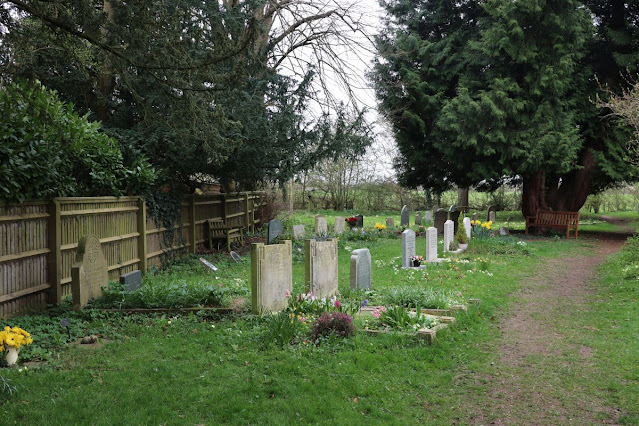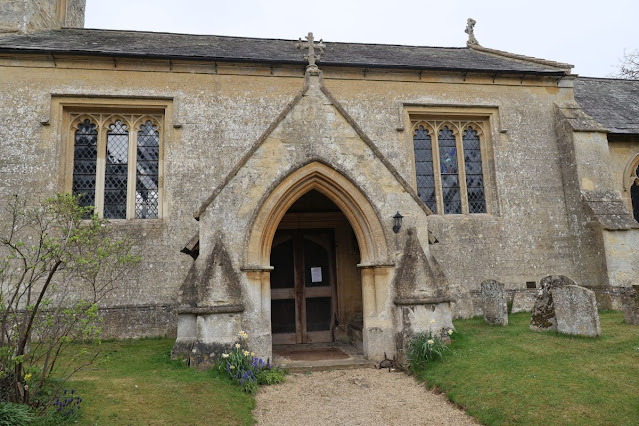This is not the first time I have been to this church, I visited briefly during lock down but intended to return for a more in depth visit. You will find some history off Wikipedia below the photo

"The
Church of England parish church of Saint Nicholas dates from the late
12th or early 13th century. The nave was built in about AD 1210, with a
porch in the middle of the south side. Relatively narrow three-bay north
and south aisles
were added in about 1230, with the south aisle absorbing the original
porch and taking the porch's south wall for the limit of its width. The
north aisle has one Norman and Early English Gothic 13th-century lancet
windows, one of which has a later rere-arch with cusped spandrels, each
with a carved rosette.
The chancel has two 13th-century lancet windows in its north
wall. Near the westerly of these windows is a rectangular recess that
may have been a squint. In its south wall are another lancet window and a
13th-century doorway. The Decorated Gothic east window is 14th-century
and has reticulated tracery with ogees.
The south wall of the chancel has at its east end a window from about
1350 that is said to have been brought from elsewhere, and towards the
west end a 15th-century window with a depressed head. Some of the
stained glass windows are 20th-century work by Ninian Comper.
The bell tower is substantially Norman but the upper stages
were remodelled in the 14th century. The tower has a saddleback roof.
In the nave some of the seats are 16th-century and there is a
west gallery fronted with 17th-century panelling. The pulpit and its
tester are also 17th-century.
Restoration work was carried out on the building in 1856, 1875
and 1907. The large stone monument to the first Thomas Tipping used to
be in the north aisle, but in 1906 was moved to its present position in
the chancel. St. Nicholas' is a Grade I listed building.
The west tower has three bells. The treble was cast in about
1599, possibly by George Appowell of Buckingham. Ellis I Knight of
Reading, Berkshire cast the tenor in 1623. George Chandler of Drayton
Parslow cast the youngest of the main bells in 1716. There is also a
Sanctus bell, cast by William Taylor's Oxford foundry in 1847.
The Puritan minister Calybute Downing held the living of the
parish from 1632 but it was then conferred on Gilbert Sheldon in 1636.
Sheldon already held the living of Hackney, received that of Oddington,
Oxfordshire at about the same time as Ickford, and at some time also
that of Newington, Oxfordshire. After the Restoration of the Monarchy,
Sheldon was consecrated Archbishop of Canterbury in 1663. St. Nicholas'
is now part of the Benefice of Worminghall with Ickford, Oakley and
Shabbington."
The photo above shows the show the north side of the church
Coming back to St Nicholas the church looks just as pleasant to look at
Getting to the church porch which had a notice telling people it would be open for private prayer from 2 till 4 pm which was unfortunate for me as I would be back home then
I did manage to get a good shot of the west end and the apex shaped tower
Getting around to the north side looking east
Another shot from further down the churchyard
Daffodils and the church
East end of the church, not a lot of room to get a view end on
North side looking west
Another shot of the tower with what looks like a tell tail of an old roof line showing
Another view of the east end from the south side
Turning left a view down the south of the church looking west
The graves in the churchyard start at the west end of the church
Going along the path past the west end of the church
Looking down the churchyard on the north side
The Spitfire carved in the headstone drew my eye to this headstone so I looked on Google and found this about Lew
Godfrey Llewellyn Baggett was known as Lew to all his friends.
Date of birth given on Service Record was 03/07/1922. Deliberately gave
wrong date in the hopes of joining the RAF earlier than was allowed.
Was enlisted on 07/10/1940.
First flight was in a Tiger Moth on 12/07/1941.
Joined 602 Squadron 27/05/1943.
Left 602 Squadron 29/12/1944 after 547 hours and 15 minutes of flying.
Joined 57 O.T.U. Boulmer 05/01/1945
The churchyard north of the church was covered in primroses
Looking west
From further back the churchyard on the north side looking west
South of the church looking west
I will leave you this week with this shot of some primroses that were in the churchyard
Till next time have a peaceful weekend
I returned a few moths later and found the inside better than I hoped, you can see the
blog in the link
































































